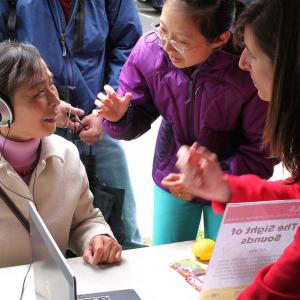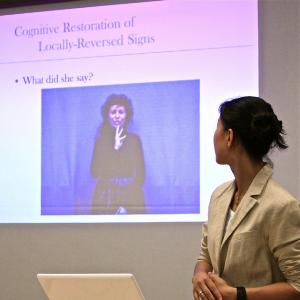HESP Seminar: Nirmal Srinivasan (Towson)
Title: "Understanding speech perception difficulties in complex listening environments: Individual contributions of age and hearing loss"
Abstract: It is well documented that older listeners have more difficulty in understanding speech in complex listening environments compared to younger listeners. In addition, hearing loss gradually occurs in most of us as we grow older. Currently, there is no way to understand the individual and unique contributions of aging and hearing loss to these deficiencies in speech perception. This talk will describe experiments that measures spatial release from masking (SRM) in simulated reverberant environments on listeners varying in age and hearing abilities. In the first experiment, release from masking was measured by comparing threshold target-to-masker ratios (TMR) obtained with a speech target presented directly ahead of the listener and two speech maskers presented from the same location or in symmetrically displaced spatial configurations in an anechoic chamber. The second experiment simulated a more realistic reverberant environment using 24 loudspeakers separated by 15° in azimuth in an anechoic chamber by calculating the directions, attenuations and delays of the reflections from a sound source. Results from both these experiments suggested that the reduction in SRM could be attributed to hearing loss alone. A third experiment was conducted with smaller spatial separations between target and maskers were used than have traditionally been implemented in SRM studies. The results from this experiment suggested that, at smaller separations (between 6°and 10°) between target and maskers, aging was a significant contributor in predicting SRM. Overall, it could be concluded that release from masking should be tested at separations smaller than what is normally tested in laboratory should be used to see the individual contributions of age to reduction in performance.











